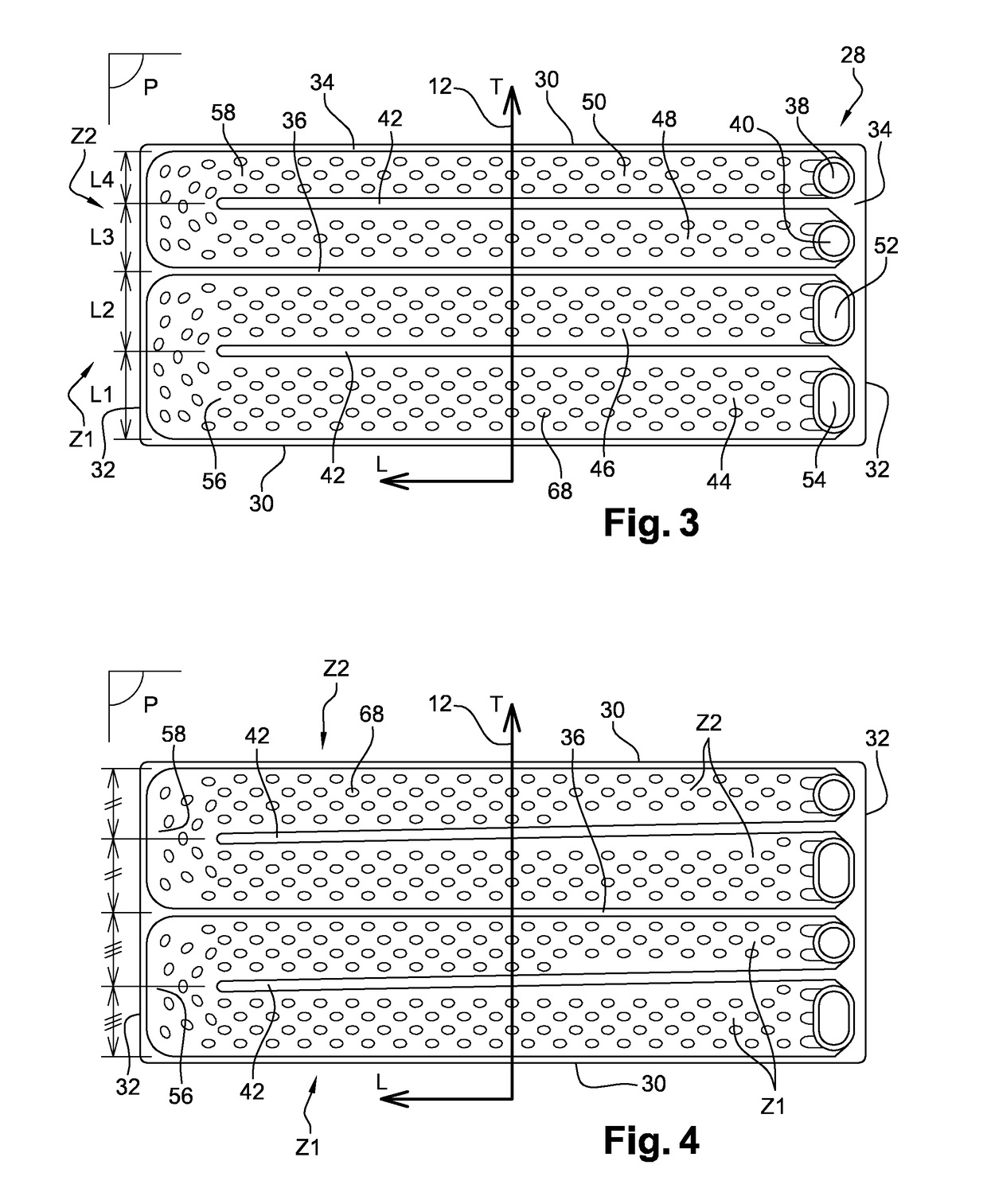Supercharge air cooler
a technology of air cooler and supercharger, which is applied in the direction of combustion-air/fuel-air treatment, machines/engines, lighting and heating apparatus, etc., can solve the problem that the temperature remains too high to achieve the performance desired today
- Summary
- Abstract
- Description
- Claims
- Application Information
AI Technical Summary
Benefits of technology
Problems solved by technology
Method used
Image
Examples
first embodiment
[0050]FIG. 3 shows the metal plates 28 of the charge air cooler 14. The plate 28, shown in a top view, is divided in two by the longitudinal boundary 36 extending along the longitudinal axis L of a transverse edge 32 to the opposite edge 32. In relation to the charge air flow 12 flowing along the transverse axis T, and in the direction of orientation of the latter, the zones Z1, Z2 are marked as the upstream zone Z1 and the downstream zone Z2.
[0051]The upstream zone Z1 is itself provided with a longitudinal barrier 42 partially separating it into two parallel longitudinal arms 44, 46 connected by only one of their ends. The two arms form an upstream arm 44 and a downstream arm 46. The fluid inlet orifice 52 is arranged at the end of the downstream arm 46 while the outlet orifice 54 is arranged at the end of the upstream arm 44. The downstream arm 46, of width L2, by which the fluid 20 enters cold, is less wide than the upstream arm 44, of width L1, by which the same fluid 20 leaves ...
second embodiment
[0068]As above, in this second embodiment shown by FIG. 5, the downstream arm 46, of width L2, by which the fluid 20 enters cold, is less wide than the upstream arm 44, of width L1, by which the same fluid 20 leaves heated, and the downstream arm 50, of width L4, by which the fluid 24 enters cold, is less wide than the upstream arm 48, of width L3, by which the same fluid 24 leaves heated.
[0069]In FIG. 5, the longitudinal barriers 42 extend strictly in the longitudinal direction L, each longitudinal arm therefore having a constant width. FIG. 6 shows an alternative of this second embodiment, in which alternative the barriers 42 form a broken line having two segments which are inclined slightly relative to the strict longitudinal direction L. Each longitudinal arm then has a section which progresses continuously from an inlet orifice to the outlet orifice. At the ends of the arms, where the downstream and upstream meet, the arms have substantially the same width.
[0070]According to FI...
PUM
 Login to View More
Login to View More Abstract
Description
Claims
Application Information
 Login to View More
Login to View More - R&D
- Intellectual Property
- Life Sciences
- Materials
- Tech Scout
- Unparalleled Data Quality
- Higher Quality Content
- 60% Fewer Hallucinations
Browse by: Latest US Patents, China's latest patents, Technical Efficacy Thesaurus, Application Domain, Technology Topic, Popular Technical Reports.
© 2025 PatSnap. All rights reserved.Legal|Privacy policy|Modern Slavery Act Transparency Statement|Sitemap|About US| Contact US: help@patsnap.com



